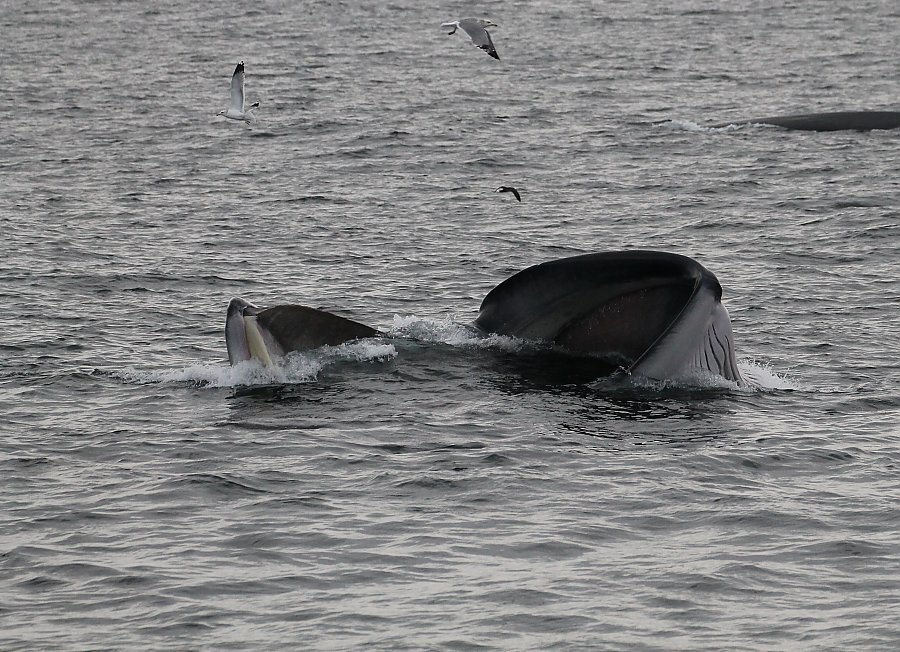
Ralphs
Discount tickets available at Ralphs for a limited time
Data collected by Aquarium interns helps identify individual whales locally

Credit: Aquarium of the Pacific
February 22, 2023
The Aquarium of the Pacific has been documenting endangered and non-endangered whales and dolphins through its Whale Photo I.D. program over the past twelve years. One of the species we document that researchers have been interested in is fin whales. The information the Aquarium of the Pacific has collected has contributed to a recently published paper, which reveals there is a population of these massive marine mammals that lives off the coast of California and the U.S. West Coast year-round.
Information from the Whale Photo I.D. program’s extensive database—such as species, GPS coordinates, and photos–was used with other survey data to identify a local group of 9,000 fin whales that reside off the coast of California. Many large whales routinely transit long migration routes between tropical waters and the Arctic or Antarctic. While scientists knew fin whales were commonly seen year-round in the same areas of Southern California, no one had previously worked to prove it was the same individual whales year-round until this study. The findings were published in Movements and Residency of Fin Whales (Balaenoptera physalus) in the California Current System in Mammalian Biology.
“This recent publication validates the contributions of community science to understanding [natural systems]. Without the thousands of hours of our interns, this discovery may not have been possible,” says James Stewart, Aquarium of the Pacific education supervisor. Stewart trained interns to collect the data and coordinated with the lead author of the study. He continually looks for opportunities to develop and further relationships with researchers and research groups, who might be able use the Aquarium’s database of whale sightings for further studies. Previously, the Aquarium’s blue whale sighting data were used in the past to help inform conservation on the largest animal on the planet. According to Stewart, his team has been able to provide hundreds, even thousands, of photos over the course of the program to further our understanding of local whales.
Whale Photo I.D. and research staff photograph and record sightings of each whale during the Aquarium’s daily public whale watch outings aboard Harbor Breeze Cruises. After this, they log the species, upload the photos, add GPS coordinates, record, animal behavior, and note the weather conditions on the water. The photos themselves are tagged with specific keywords—such as lunge feeding, rostrum, and blowholes—to make it easy to use the photos later for identification purposes.
To provide opportunities for the general public interested in this program, the Aquarium now has community science volunteer positions for whale I.D. data collection and data processing. For those who are interested in these volunteer positions and more, please check the volunteer website for opportunities.

Discount tickets available at Ralphs for a limited time